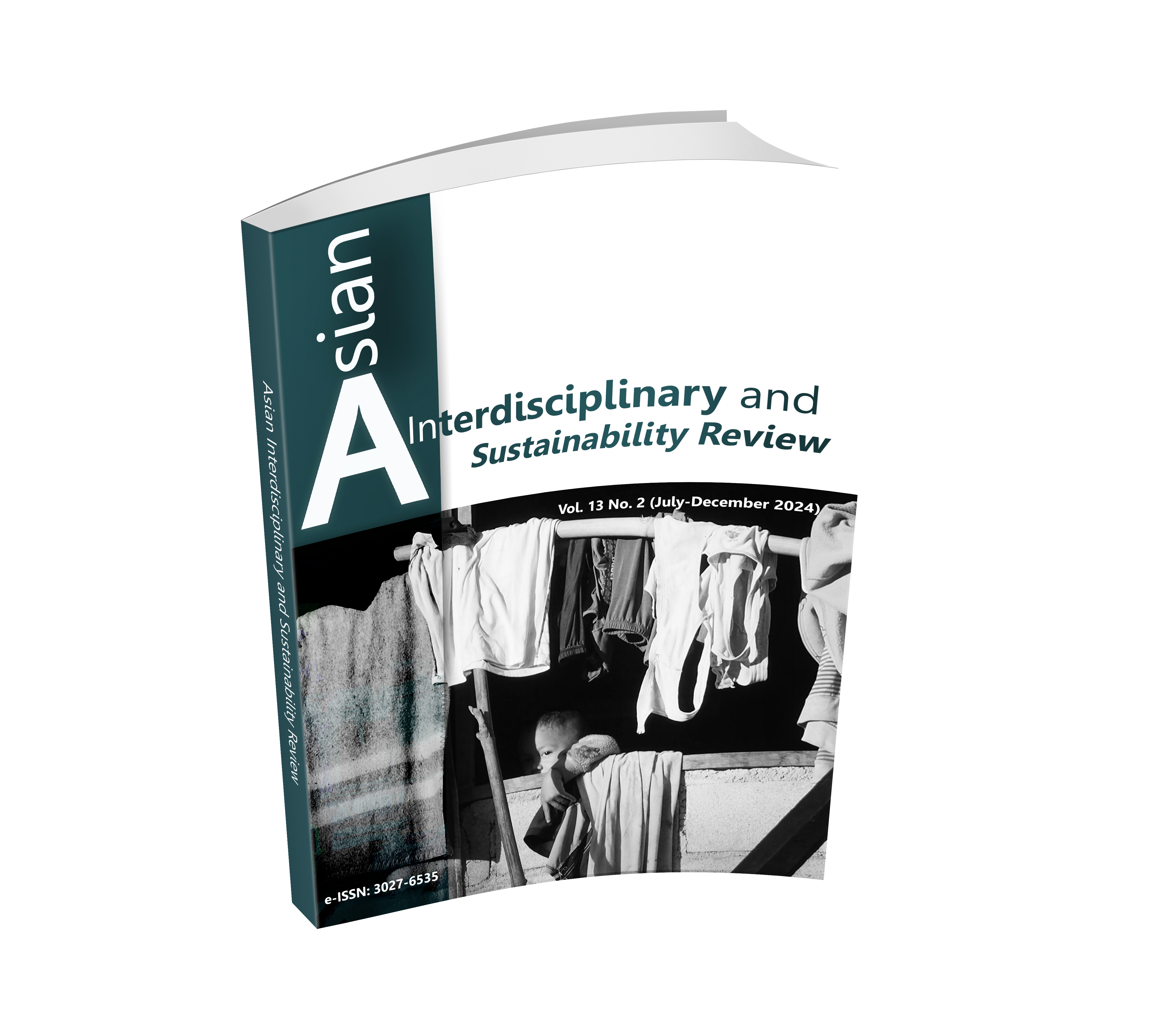BIODIVERSITY, RESILIENCE, AND CONSERVATION BASED TOURISM: A GLIMPSE INTO INDONESIA'S MAROS-PANGKEP GEOPARK
DOI:
https://doi.org/10.14456/aisr.2024.9Keywords:
Geopark, Indonesia, BiodiversityAbstract
This paper provides a captivating glimpse into the Indonesia's Maros-Pangkep Geopark's exceptional qualities. Research methodology outlining data collection and analysis, this piece utilizes a multi-pronged approach to unveil the captivating biodiversity of Maros-Pangkep Geopark. Immersive Exploration: Firsthand exploration of the geopark's diverse ecosystems, including rainforests, caves, and karst formations, provides a foundational understanding of the existing flora and fauna. Collaborating with park rangers, biologists, and conservationists working within the geopark offers invaluable insights. These experts possess extensive knowledge of endemic species, ongoing conservation efforts, and the intricate relationships within the ecosystem. Interviews and discussions with them paint a comprehensive picture of the geopark's biodiversity. Here, visitors can embark on a journey through time, exploring geological formations that tell the story of our planet's ancient past. The Maros-Pangkep Geopark boasts a unique blend of captivating landscapes, including majestic karst formations, hidden caves adorned with prehistoric art, and diverse ecosystems teeming with life.
Downloads
References
Al Hazar, B., Sumarmi, S., Astina, I., & Shrestha, R. (2024). Mappalili Ceremony in Supporting Unesco Version of Cultural Tourism in Maros-Pangkep Geopark. GeoJournal of Tourism and Geosites, 52(1), 360-371.
Ansori, C., Setiawan, N., Warmada, I., & Yogaswara, H. (2022). Identification of geodiversity and evaluation of geosites to determine geopark themes of the Karangsambung-Karangbolong National Geopark, Kebumen, Indonesia. International Journal of Geoheritage and Parks, 10(1), 1-15.
Deharveng, L., Rahmadi, C., Suhardjono, Y., & Bedos, A. (2021). The Towakkalak System, A Hotspot of Subterranean Biodiversity in Sulawesi, Indonesia. Diversity, 13(8), 392.
Druce, S. (2009). The lands west of the lakes; A history of the Ajattappareng kingdoms of South Sulawesi 1200 to 1600 CE. South Holland: Brill.
Duli, A., Mulyadi, Y., & Rosmawati. (2019). The Mapping Out of Maros-Pangkep Karst Forest as a Cultural Heritage Conservation. IOP Conf. Series: Earth and Environmental Science, 270, 012014.
Forshee, J. (2006). Culture and Customs of Indonesia. London: Bloomsbury Publishing.
Harvey, B. (1974). Tradition, Islam, and rebellion: South Sulawesi 1950-1965. Doctor of Philosophy Thesis, Cornell University.
Hayati, N., & Dewi, I. (2020). Benefit and perceptions of people towards karst in Pangkep District, South Sulawesi. IOP Conf. Series: Earth and Environmental Science, 487, 012015.
Hemingway, E. (1952). The Old Man and the Sea. New York: Charles Scribner's Sons.
Inglis, K. (2012). Asian Style Hotels: Bali, Java, Malaysia, Singapore, Thailand. Vermont: Tuttle Publishing.
Invanni, I., & Zhiddiq, S. (2022). Kesiapan Geopark Nasional Maros Pangkep Menuju UNESCO Global Geopark (Studi Pembanding Unseco Global Geopark Gunung Sewu). Jurnal Environmental Science, 4(2), 212-225.
Jaya, A., Sumantri, I., Bachri, D., & Maulana, B. (2022). Understanding and Quantitative Evaluation of Geosites and Geodiversity in Maros-Pangkep, South Sulawesi, Indonesia. Geoheritage, 14, 40.
Junaid, I. (2014). Opportunities and Challenges of Cultural Heritage Tourism: Socio-economic politics of sustainable tourism in South Sulawesi Province, Indonesia. Doctor of Philosophy Thesis, University of Waikato.
Kadang, H., Gosal, B., Panggeso, J., Bubun, U., & Batu, K. (2021). Identification of Business Opportunity in Provision the Sustainability of Rammang-Rammang Karst Tourism in South Sulawesi, Indonesia. JManagER, 1(1), 76-86.
Mandong, I., Budiarti, T., & Munandar, A. (2023). Kajian Potensi Objek Daya Tarik Wisata Alam Karst Rammang-Rammang di Kabupaten Maros Provinsi Sulawesi Selatan. Jurnal Lanskap Indonesia, 15(1), 36-41.
Pawalluri, T. (2023). The Impact of Tourism on Social Change in Indonesia. International Journal of Education, Vocational and Social Science, 2(4), 104-117.
Priatini, W. (2018). How Tourism Education Faces the Industrial Revolution 4.0. A paper presented at the 3rd International Seminar on Tourism, Universitas Pendidikan Indonesia, Indonesia.
Resosudarmo, B., & Jotzo, F. (eds.). (2009). Working with Nature against Poverty: Development, Resources and the Environment in Eastern Indonesia. Singapore: Institute of Southeast Asian Studies.
Supriatna, J. (2022). Field Guide to the Primates of Indonesia. Cham: Springer.
Sutton, R. (2002). Calling Back the Spirit: Music, Dance, and Cultural Politics in Lowland South Sulawesi. Oxford: Oxford University Press.
Von Rintelen, K., Arida, E., & Häuser, C. (2017). A review of biodiversity-related issues and challenges in megadiverse Indonesia and other Southeast Asian countries. Research Ideas and Outcomes, 3, e20860.

Downloads
Published
How to Cite
Issue
Section
License
Copyright (c) 2024 Authors

This work is licensed under a Creative Commons Attribution-NonCommercial-NoDerivatives 4.0 International License.











.png)


